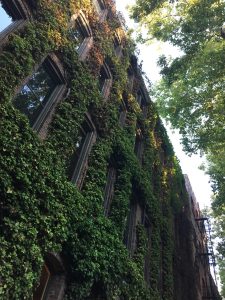Welcome, friends! Today, we’re diving into an exciting and transformative concept in sustainable architecture: the principles of net-zero energy buildings. These innovative structures are designed to produce as much energy as they consume, providing a green, efficient, and self-sufficient alternative to conventional buildings. By integrating renewable energy sources, enhancing energy efficiency, and leveraging cutting-edge technologies, we can create spaces that not only meet our needs but also foster a healthier planet. Join us as we explore the key principles behind these groundbreaking buildings and discover how they are paving the way for a more sustainable future. Have you ever wondered what the principles of net-zero energy buildings are? With the rising concerns about climate change and the need for sustainable living, it’s a good time for us to explore what makes buildings more energy-efficient and environmentally friendly. Let’s delve into the principles that govern net-zero energy buildings and see how they contribute to a more sustainable future.

Understanding Net-Zero Energy Buildings
What is a Net-Zero Energy Building?
A net-zero energy building (NZEB) is a structure that generates as much energy as it consumes over the course of a year. This balance is achieved through a combination of energy-efficient design, renewable energy sources, and thoughtful operational practices. In other words, the building’s energy needs are met entirely by the energy it produces on-site, leading to no net energy consumption from external sources.
Why Are NZEBs Important?
NZEBs play a crucial role in mitigating climate change by reducing greenhouse gas emissions. They also help us save on energy costs and contribute to energy independence. By promoting sustainable construction and operational practices, NZEBs set a positive precedent for future building developments.
Key Elements of NZEBs
Let’s break down the primary elements that constitute NZEBs. These include energy efficiency, renewable energy generation, and energy storage.
| Element | Description |
|---|---|
| Energy Efficiency | Utilizing design strategies and technologies that reduce energy consumption. |
| Renewable Energy | Generating energy on-site using renewable sources like solar, wind, or geothermal. |
| Energy Storage | Implementing systems to store excess energy produced for use during low production times. |
Principles of Net-Zero Energy Buildings
Energy Efficiency
Energy efficiency forms the cornerstone of NZEBs. It encompasses the use of advanced technologies and design strategies that minimize energy usage. Let’s delve deeper into some of these strategies.
Building Envelope
The building envelope includes the physical barrier between the interior and the exterior environment, such as walls, roof, windows, and doors. A well-designed building envelope minimizes heat loss during winter and keeps the structure cool during summer. This can be achieved through high-performance insulation, air sealing, and reflective roofing materials.
Efficient Appliances and Lighting
By incorporating energy-efficient appliances and LED lighting, we can significantly reduce energy consumption. Modern appliances use less energy while providing superior performance. Additionally, lighting systems equipped with motion sensors and daylight dimmers can further enhance energy savings.
Renewable Energy Integration
Renewable energy sources are integral to achieving net-zero energy status. They harness natural resources to produce clean energy, which can be used on-site.
Solar Panels
Solar panels, or photovoltaic (PV) systems, are commonly used in NZEBs to convert sunlight into electricity. They can be installed on rooftops or integrated into building facades. Solar energy is abundant and can meet a substantial portion of a building’s energy needs.
Wind Turbines
In areas with sufficient wind resources, wind turbines can be installed to generate electricity. They can be used in conjunction with solar panels to provide a reliable and continuous energy supply.
Geothermal Systems
Geothermal energy systems utilize the stable temperatures found underground to provide heating and cooling. These systems are highly efficient and can significantly reduce the building’s reliance on conventional heating and cooling methods.
Energy Storage Solutions
Energy storage is essential for balancing energy supply and demand in NZEBs. Storage solutions ensure that excess energy generated during peak production periods is saved for use during times of low production.
Batteries
Battery storage systems, such as lithium-ion batteries, are commonly used in NZEBs. They store excess electricity generated by renewable sources and release it when needed, ensuring a consistent energy supply.
Thermal Storage
Thermal storage systems store excess heat or cold, which can be used later for heating or cooling the building. This is especially useful in maintaining comfortable indoor temperatures without relying on external energy sources.
Design and Construction Considerations
Site Selection and Orientation
Choosing the right site and orientation is critical for maximizing the efficiency of an NZEB. Ideally, the building should be oriented to maximize solar gain in winter and minimize it in summer. This helps in optimizing natural lighting and reducing the need for artificial heating and cooling.
Passive Design Strategies
Passive design strategies leverage natural elements to maintain indoor comfort, thereby reducing the need for mechanical systems.
Natural Ventilation
Designing for natural ventilation involves positioning windows and vents to facilitate airflow through the building. This strategy can significantly reduce the need for air conditioning, particularly in temperate climates.
Daylighting
Daylighting involves maximizing the use of natural light to illuminate interior spaces. Properly positioned windows, skylights, and light shelves can reduce the need for artificial lighting, thereby saving energy.
High-Performance Windows and Insulation
Installing high-performance windows with low-emissivity (Low-E) coatings and multiple panes can enhance thermal insulation. Similarly, high-quality insulation materials used in walls, roofs, and floors can further reduce energy losses.
Advanced HVAC Systems
Heating, ventilation, and air conditioning (HVAC) systems in NZEBs are designed for maximum efficiency. These systems often include heat recovery ventilators (HRVs) and energy recovery ventilators (ERVs) that capture and reuse heat from exhaust air.
Operational Strategies
Monitoring and Control Systems
Real-time monitoring and control systems are crucial for maintaining the energy balance in NZEBs. These systems track energy consumption and generation, allowing for adjustments that optimize energy use.
Smart Thermostats
Smart thermostats learn our schedules and preferences, adjusting heating and cooling to save energy while maintaining comfort. They can also be controlled remotely via smartphones or computers.
Building Management Systems (BMS)
A BMS integrates various building systems, such as lighting, HVAC, and security, into a unified platform. It enables centralized control and monitoring, enhancing operational efficiency and energy management.
Occupant Engagement
Engaging occupants in energy-saving practices is essential for the success of NZEBs. Educating occupants about the building’s features and encouraging energy-conscious behavior can lead to significant energy savings.
Energy Dashboards
Energy dashboards display real-time information about the building’s energy use and generation. They can be placed in common areas to keep occupants informed and motivated to reduce energy consumption.
Incentive Programs
Implementing incentive programs that reward occupants for reducing energy use can foster a culture of sustainability. These programs can include competitions, rewards, or recognition for energy-saving achievements.

Benefits of Net-Zero Energy Buildings
Environmental Impact
NZEBs significantly reduce carbon emissions by relying on renewable energy sources and minimizing energy consumption. This helps mitigate climate change and conserves natural resources.
Economic Savings
Although the initial investment for NZEBs may be higher, the long-term savings on energy costs make them economically viable. Reduced utility bills and potential incentives or tax credits add to the financial benefits.
Improved Indoor Air Quality
By using advanced ventilation systems and low-emission materials, NZEBs maintain superior indoor air quality. This enhances occupants’ health and well-being, reducing the risk of respiratory issues and other health problems.
Increased Property Value
NZEBs are often seen as premium properties due to their advanced design and sustainable features. This can lead to higher property values and increased marketability.
Challenges and Solutions
Initial Costs
One of the main challenges in constructing NZEBs is the higher initial cost. However, financial incentives, tax credits, and long-term energy savings can offset these costs.
Financial Incentives
Many governments and organizations offer incentives for building NZEBs. These can include grants, rebates, or low-interest loans aimed at reducing the financial burden of sustainable construction.
Technological Limitations
While technology for NZEBs has advanced, there can still be limitations in availability and integration.
Research and Development
Continuous research and development in sustainable technologies can help overcome current limitations. Innovations in energy storage, building materials, and renewable energy systems will further enhance the feasibility and efficiency of NZEBs.

Future of Net-Zero Energy Buildings
Policy and Regulation
As awareness of climate change grows, many governments are implementing policies and regulations that promote NZEBs. Building codes are being updated to include energy efficiency standards and requirements for renewable energy integration.
Advancements in Technology
Technological advancements continue to drive the progress of NZEBs. Breakthroughs in materials science, energy storage, and renewable energy technologies will make net-zero energy goals more attainable and affordable.
Community and Grid Integration
NZEBs can play a vital role in creating sustainable communities and smart grids. By incorporating multiple NZEBs into a community, we can share resources, balance energy loads, and enhance overall efficiency.
Conclusion
Understanding the principles of net-zero energy buildings allows us to appreciate the efforts needed to create sustainable and efficient structures. These buildings represent a significant step toward reducing our environmental footprint, saving on energy costs, and enhancing the quality of life for occupants. By focusing on energy efficiency, integrating renewable energy, and adopting advanced technologies, we can make net-zero energy buildings a standard in future construction. Let’s embrace these principles and contribute to a greener, more sustainable world.



